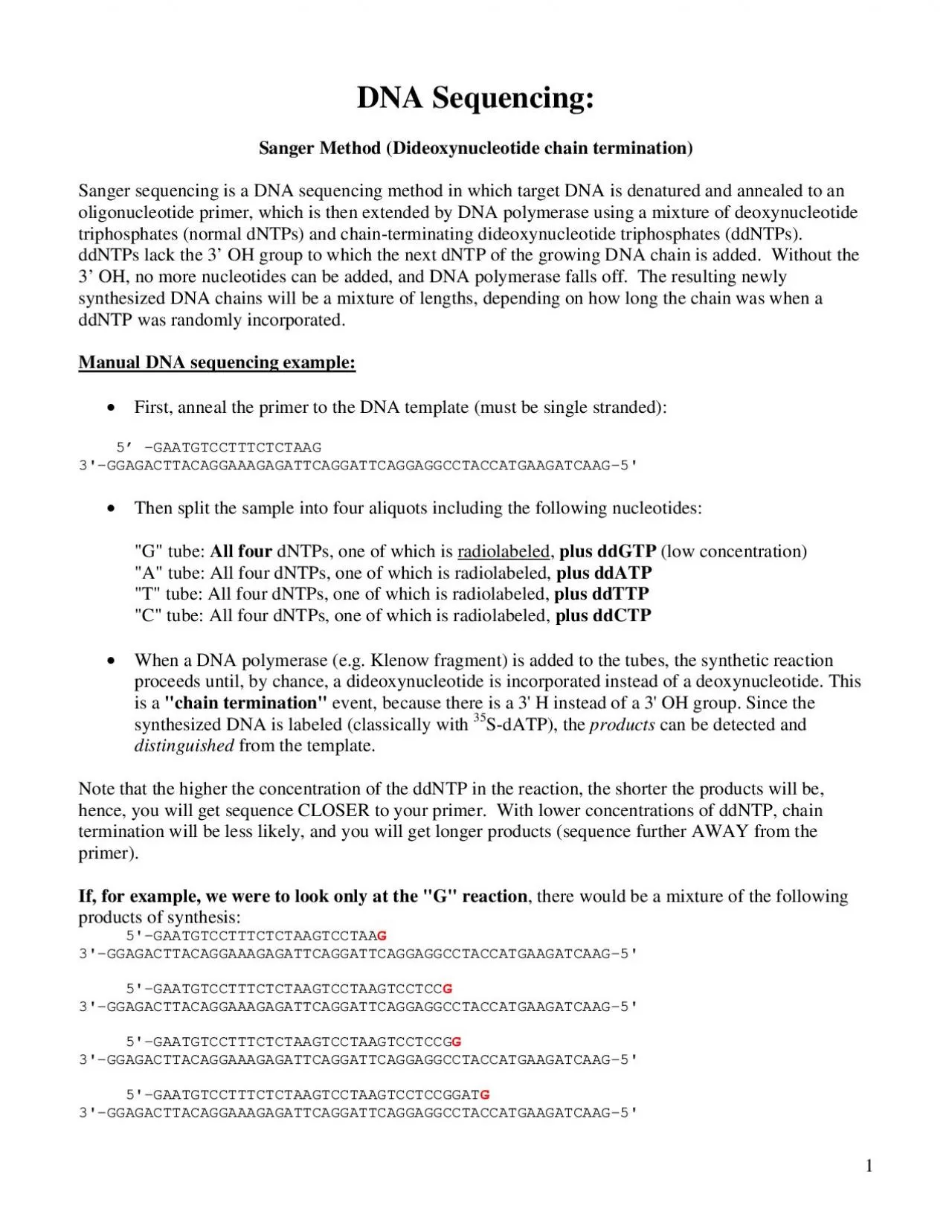

First anneal the primer to the DNA template must be single strandedThen split the sample into four aliquots including the following nucleotides When a DNA polymerase eg Klenow fragment ispro ID: 950227
Download Pdf The PPT/PDF document "Sanger sequencing is a DNA sequencing me..." is the property of its rightful owner. Permission is granted to download and print the materials on this web site for personal, non-commercial use only, and to display it on your personal computer provided you do not modify the materials and that you retain all copyright notices contained in the materials. By downloading content from our website, you accept the terms of this agreement.
Sanger sequencing is a DNA sequencing method in whicoligonucleotide primer, which is then extended by DNA polymerase using a mixture of deoxynucleotide triphosphates (normal dNTPs) and chain-termin of the growing DNA chain is added. Without the DNA polymerase falls off. The resulting newly synthesized DNA chains will be a mixture of lengddNTP was randomly incorporated. First, anneal the primer to the DNA template (must be single stranded):Then split the sample into four aliquots including the following nucleotides: When a DNA polymerase (e.g. Klenow fragment) isproceeds until, by chance, a dideoxynucleotide is incorporated instead of a deoxynucleotide.
This "chain termination" event, because there is a 3' H instead of a 3' OH group. Since the from the template.hence, you will get sequence CLOSER to your primer. With lower concentrations of ddNTP, chain termination will be less likely, and you will get longer products (sequence further AWAY from the primer). If, for example, we were to look only at the "G" reaction, there would be a mixture of the following The resolution of the gel electrophoresis is very important in DNA se100, or 200 bases in length must be separable from molecules that (respectively). To accomplish this: Polyacrylamide, not agarose, is used The gels must be quite large so that the m
olecules migrate further and are better resolved. Samples are denatured before they are loaded, anlding of the molecules and formahydrogen bonding that would alter the mobility of the molecule. The gels are run at higher temperaturformation. {Note that this example is for demonstration only: you can't really obtain usable sequence information that close to the end of the primer because few termination events will have occurred so soon. If you increased the ddNTP:dNTP ratio, you would get more sequence close to the primer, but make it more difficult to read sequence 200 to 300 nucleotides further down, because most of the synthetic products would have ter
minated earlier.} Dye termination sequencing The Sanger method chain termination unning, & reading polyacrylamide gels has been replaced by automated methods. Instsequencing reactions the same (with a radioactive deoxynucleotide ), each dideoxynucleotide is labeled with a fluorescent marker. When excited intensity translated into a data peak. Thus all four chain termination reactions can be performed in the same tube, and run on a single lane on a gel. A machine scans the lane with a laser. The wavelength of fluorescence from the lainterpreted by the machine as an indicaddC) a particular DNA band came from. 4 ored in the form of a chromatogram